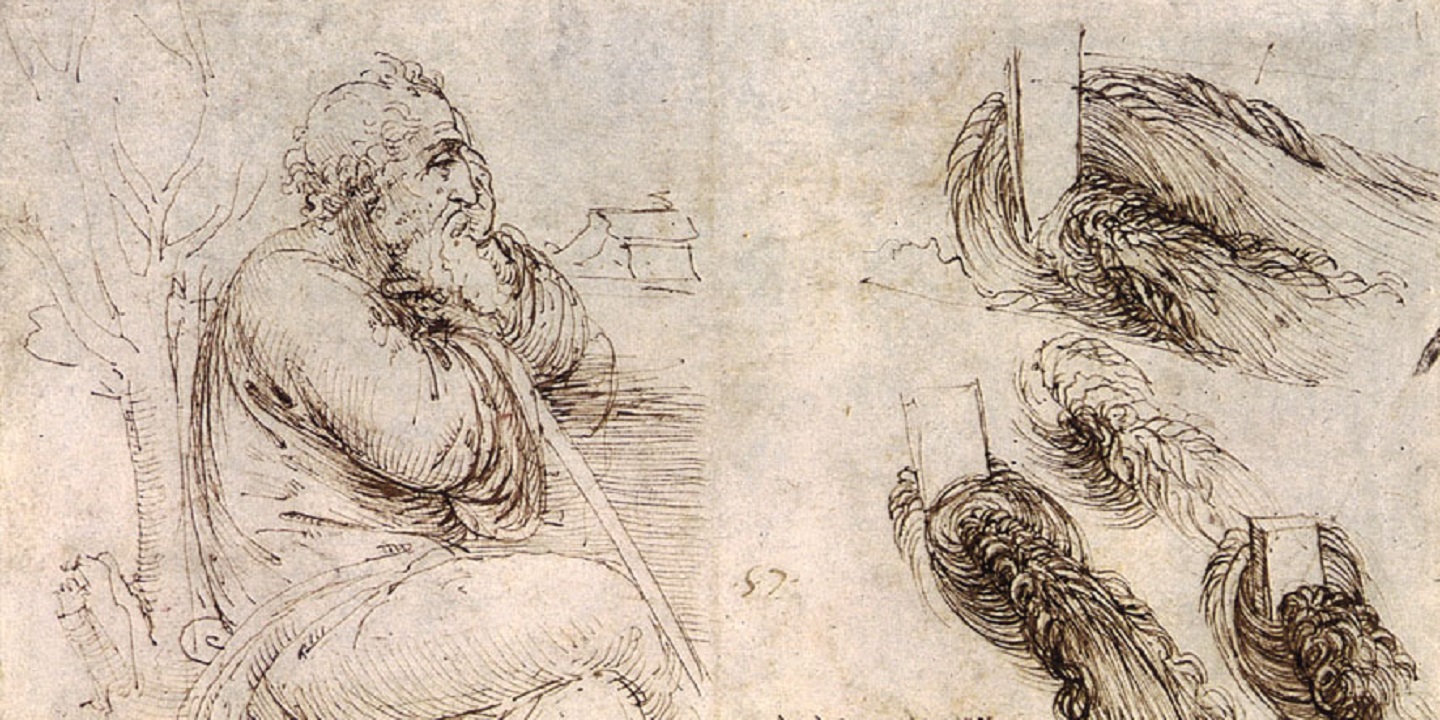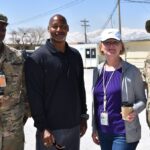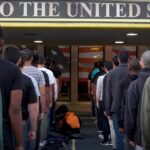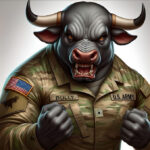
…he offered a surprising unsolicited opinion. He shrugged his shoulders and quipped that staff rides were overdone. They were great fun but lacked relevance in our digital world.
Sometimes chance encounters leave lasting impressions. Earlier this summer in Carlisle, I ran into an officer I served with a few years ago. He is extraordinarily intelligent. Likably brash. People pay attention to him. Knowing that my mission the following day was to lead one of the College’s Gettysburg Staff Rides, he offered a surprising unsolicited opinion. He shrugged his shoulders and quipped that staff rides were overdone. They were great fun but lacked relevance in our digital world.
There is rarely a point in arguing with someone so certain, but as we talked, he revealed that when he conducts professional development with his staff, his biggest challenge is getting them to engage in honest thinking rather than parroting back what they think he wants to hear. This lament is common, so I was ready with a response: they are conditioned to act this way. They are excellent sheep. But I added that the staff ride—that same form that he so quickly dismissed—offered a way forward.
I implored my colleague to watch and learn from his staff ride guide the next day. Note how the guide uses the battle’s stories to introduce larger enduring lessons. Listen for how your guide asks questions designed to invite you into a conversation about ideas. You will not only learn something of yourself, but also a technique for teaching and learning that is transferable to your unit and even life beyond the Army. The key to growth is in cultivating and inviting inquiry and curiosity, and the key to cultivating those is for leaders to ask thoughtful questions and to encourage honest dialogue. The ability to ask a good question helps a team retrieve and even generate new knowledge. Questions help us forge new patterns of thinking and build expertise.
My colleague’s cynicism came to mind the next morning as I recounted the story of Union General Dan Sickles at the Battle of Gettysburg. Once again, I found that he is as polarizing a figure today as he was in 1863. Sickles’ infamous decision to push his Third Corps up to the Sherfy Peach Orchard made a mockery of both Robert E. Lee’s and George G. Meade’s plans. Did he disrupt Lee’s plan or nearly cause the collapse of the Union army? After hearing the story, students have no shortage of opinions. Their visceral response, as if Sickles made his decision weeks ago, happens with such regularity that it is easy to imagine we see something more in his actions than a maddening historical vignette.
Perhaps we react this way because we too act on imperfect understanding. What we think is prudent others see as rash, and vice-versa. We get defensive when confronted. We feel our decisions are right (until we discover that we are wrong). Perhaps we see Sickles in ourselves, our subordinates, our peers, or our commanders. But sometimes in this story we are Meade, ignoring what right in front of us because it does not fit our expectations. At Gettysburg, Meade placed Sickles on the extreme left flank of his army, as far away (he thought) from where the day’s fighting would be. Meade was certain Lee would attack his right. He ignored Sickles and all the signs of Lee’s pending attack. More than a simple battlefield tour, the staff ride allows students to see themselves in these commanders and to think about the human side of command.
Do we want more or fewer leaders like Dan Sickles? On one hand, don’t we want bold initiative from commanders who see what we do not see? At the same time, shouldn’t we demand technical competence in understanding weapons, tactics, and terrain? Is it harder to develop technical skill or risk tolerance—are the two related? How are these traits related to the idea of mission command? What qualities about Sickles might we admire and seek to develop in our leaders? How might mistakes be avoided? How can we use the emotion and visceral reactions that Sickles’ story prompts to generate real discussion about contemporary leadership?
Another example from a staff ride where a genuine question can yield fruitful conversation might be how we understand vision, intuition, and luck in war. If we look, for example, at Winfield Scott Hancock’s role on the second day of the battle, it seems that he sensed what was happening, knew what to do about it, and then did it. How do successful commanders seem to simply know what to do at precisely the right moment? Some in my group argued luck. Others, experience. But more questions followed: Where does this intuitive sense come from? Can we create it, or hone it? Despite our group’s tight schedule, I challenged them to dig deeper. This line of inquiry was more important than getting to the next stand.
The experience argument was winning, but I saw some skeptical faces and tried to stir the pot: Does experience alone really confer expertise? What if I use a checklist for 20 years…will I be equipped to handle the unexpected, the unanticipated? Is it possible to have experience and avoid learning? These are sincere questions, and they got everyone talking to each other—not simply answering me. For adults, especially, it’s often more effective to have them engage each other in debate than it is for them to answer questions posed by an instructor. When one student suggested that we “engineer” training events to win rather than learn, and that many after-action reviews are too prescriptive to invite learning, he generated one of the liveliest debates.
This unplanned line of inquiry offered me an opportunity to make connections to and supplement previous course material. Here, I quoted from Weick and Sutcliffe’s work on organizations, namely that success can reinforce a single way of doing business, blind us to changing conditions, and lead to catastrophic failure. I suggested that as senior commanders, our job wasn’t to come up with solutions or to ensure that we avoid this potentiality. It was to ask the right questions. Do we? Do we know how?
The lack of easy answers and prescriptive solutions in this essay will frustrate some, but that’s the point. Resist the urge to make tidy what’s extraordinarily complex.
Staff rides offer an opportunity to provoke debate. Rather than simply telling the story of Meade’s empowerment of Hancock, or Reynolds—he asked them to determine if he should bring the army to Gettysburg—I provoke a debate about control in the age of empowerment. Did Meade display trust toward two key subordinates, or did he abdicate his responsibility as the commander? We might ask similar questions of Lee when discussing his late day instructions to Dick Ewell, one of his senior commanders. What makes an effective intent statement?
These questions were not rhetorical. I wanted conversation. I would pin my students down peppering them with more questions if necessary. Does “trust” mean the same thing to everyone? What does it mean to you? What are the consequences of having different definitions? Must everyone tell the truth in the same way, or do they tell it from their particular vantage point? How does personality affect communication and candor? Are we prepared to deliver bad news? Are we prepared to hear it? It’s easy to say we’re prepared. But what happens when we’re up against a timeline and an eager intelligence officer raises doubt.
Staff rides allow us to connect the concrete—what happened, and when and where and how—to the abstract—about strategic leadership and decision making and communication. By telling stories (and, yes, a skilled staff-ride leader will have plenty of stories to tell) and ensuring everyone can follow the facts of a battle, we can enable participants to take the lead on the discussion. For example, examining decisions by past leaders helps us understand how different decision-making heuristics play a role, from sunk cost, confirmation bias, framing, and anchoring to coherent stories and “confidence over doubt.”
If you’re planning a staff ride to cultivate inquiry and dialogue, it is important to begin the day by getting everyone on the same page and ensuring a common understanding. Before we talk about Meade or Lee or Sickles or Longstreet at Gettysburg, let’s talk about the key ideas we want to explore. Are leaders blind to change? Why? What can we do about this apparent blindness? These questions might garner some of the strongest reactions.
But not all questions are useful. Questions that are too narrow, where there’s a specific answer or something that you are expecting to hear, may defeat the purpose of cultivating inquiry and curiosity as key attributes of leaders. Playing 20 questions may be fine for a road trip, but it’s killer on a staff ride. Good questions get your participants to think about the problems that past leaders face and to discuss ideas with each other.
Like any professional development activity, designing a staff ride that is more than a battlefield tour requires a great deal of planning. Leaders must develop and rehearse their plan, and anticipate student reactions. They must work to balance the concrete with the abstract and ensure that it’s not just the stories that students take away: students will remember what they think about.
We love to indict Meade, Lee, Ewell, or Longstreet, etc. We shake our heads wondering how they could be so blind to their folly. But how self-aware are we? Indeed, every year I have students who express frustration with the nonsense they see. They usually have a litany. I remind them that once upon a time their raters and senior raters stood very much in the same place having the same discussion with someone like me. They too were disgusted and vowed change. Then I asked the most important question of all, the one for which there is no ready answer: What are you going to do that’s different? The lack of easy answers and prescriptive solutions in this essay will frustrate some, but that’s the point. Resist the urge to make tidy what’s extraordinarily complex.
You might even invite Lee or Meade into your conversations. One of my favorite questions to “If Lee (or Meade) were here, how would he respond to your comments?” This question implores students to think both critically and with empathy for historical actors and it helps them avoid the traps of presentism and hindsight bias.
My skeptical colleague has not found me since his staff ride, but I do hope chance serves up another meeting. We could chat about how our job as military leaders is to learn to ask the questions that get our people thinking. I am confident that having framed the staff ride as I did, he was primed to see how it was more than a lark. The staff ride offers a model for professional development based on inquiry and the value of asking questions. It is applicable in any teaching or professional development activity.
Questions are uncomfortable. They challenge and annoy. They certainly aren’t efficient. In fact, they wreck just about every Chief of Staff’s decision-making process and timeline. Yet if we don’t discipline ourselves to ask more of them I suspect history will be unkind to us as some future staff ride guide asks, “how could they have been so blind to their own folly?”
Colonel (USAR Ret.) Thomas Williams teaches leadership (part-time) at Quinnipiac University in Hamden, Connecticut. He is a retired USAR officer and, once upon a time, a member of the Department of Distance Education faculty at the United States Army War College in Carlisle, Pennsylvania. The views expressed in this article are those of the author and do not necessarily reflect those of U.S Southern Command, U.S. Army, or Department of Defense.
Image: Old Man with Water Studies, The image is thought to be a self portrait of Leonardo da Vinci circa 1510 as he examines the fluid dynamics of water as it passed around the tip of a stick when placed in the moving current of a stream. The translated inscription reads;
Observe the motion of the water surface, which resembles that of hair, that has two motions: one due to the weight of the shaft, the other to the shape of the curls; thus, water has eddying motions, one part of which is due to the principal current, the other to the random and reverse motion.
Image Credit: Leonardo da Vinci personal journals




